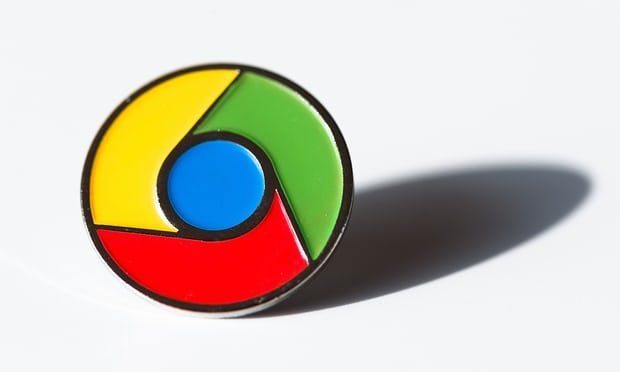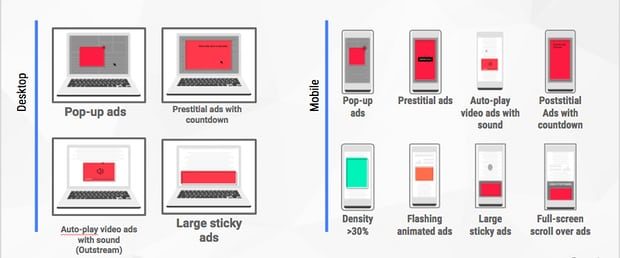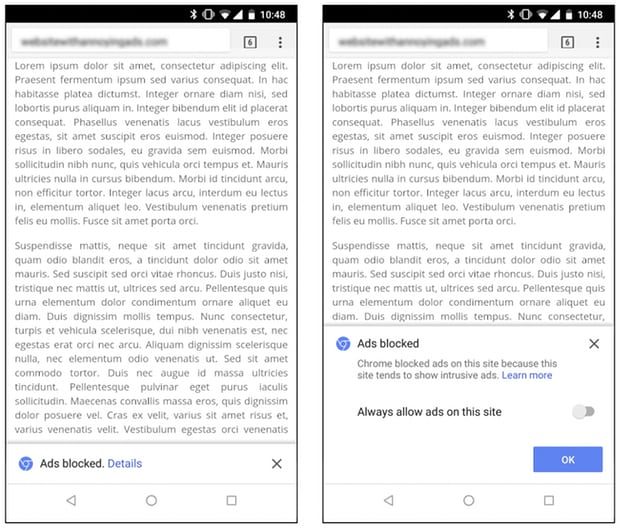
The change, announced in June, will see the dominant browser that is used by over 56% of internet users block some of the most intrusive ads including full-page prestitial ads, flashing animated ads and auto-playing video ads with sound.
"A big source of frustration is annoying ads: video ads that play at full blast or giant pop-ups where you can't seem to find the exit icon," said Rahul Roy-Chowdhury, vice president for Chrome. "These ads are designed to be disruptive and often stand in the way of people using their browsers for their intended purpose - connecting them to content and information. It's clear that annoying ads degrade what we all love about the web."
The built-in adblocker will stop showing all ads on any sites that repeatedly display any one of a list of the most disruptive ads, as decided by the Coalition for Better Ads (CBA) - a group of advertising and online media companies including Google, Facebook, Microsoft, Proctor & Gamble, Unilever and a collection of publishers including News Corp, Thomson Reuters and the Washington Post.
Among the list of banned ad types are anything that pops up, makes noise, blocks the screen or won't go away. But it also includes sites with an advert density of over 30%.

Bentzel explained that Chrome's approach to adblocking is therefore quite different to other adblocking tools. Instead of outright blocking all ads, Google will inform sites that contravene the CBA guidelines, give them 30 days to rectify the situation and only then block ads from sites that persist.
Chrome will pop up a notification if a user lands on a site where all the ads are blocked allowing them to allow adverts on that particular site.
"Our goal is not to filter any ads at all but to improve the experience for all web users," said Bentzel.
Comment: That's an understandable goal but one wonders how it will be when implemented.
As of 12 February, 42% of sites warned by Google, ahead of the adblocker being switched on, altered their display ads including the LA Times, Forbes and the Chicago Tribune. But research by rival Eyeo reckons Google's system will only remove nine out of the 55 types of adverts on the desktop web, while Google has faced criticism over the level of influence it has exerted over the CBA.
By having the adblocker turned on by default in its Chrome browser Google is attempting to shape what is and isn't acceptable, instead of simply blocking all advertising. Google's parent company Alphabet generates the majority of its revenue from display ads, but Google's own AdSense and DoubleClick have not been made exempt from the blocker. Two important ad types have been made exempt, however: Chrome will not block pre-roll adverts on videos for platforms such as YouTube nor Facebook's in-stream video ads with sound.
"We've already seen more and more people express their discontent with annoying ads by installing ad blockers, but blocking all ads can hurt sites or advertisers who aren't doing anything disruptive," said Roy-Chowdhury.
Comment: It'd also hurt Googles profits.
Over 11% of internet users are estimated to be using an ad blocker, according to data from PageFair.
"By focusing on filtering out disruptive ad experiences, we can help keep the entire ecosystem of the web healthy, and give people a significantly better user experience than they have today," Roy-Chowdhury said.
Google's adblocking efforts are focused on sites from North America and western Europe for now and will only block around 1% of all adverts, which means users are unlikely to see an instant cut in the number of ads while they browse unless they frequent particularly ad-clogged sites.




They have been blacklisting websites of which whose content they disagree from the use of their adsense service for many years. Such websites have subsequently been forced to use alternative adsense type solutions.
In Google's mission to control and manipulate both access to and information itself now it seems they are seeking to eliminate what remains of their competition in the ad service space which has the added benefit of cutting off another source of revenue to the information providers and content creators which they dislike.
In other words they arbitrarily ban websites from using their adsense service, now they are going to indiscriminately ban all ads which they deem inappropriate (their competition) (for all users dumb enough use the crapware known as chrome). The claim that this will affect their own service is nonsense, the double standard is absolute.
This is economic and information warfare on a grand scale.